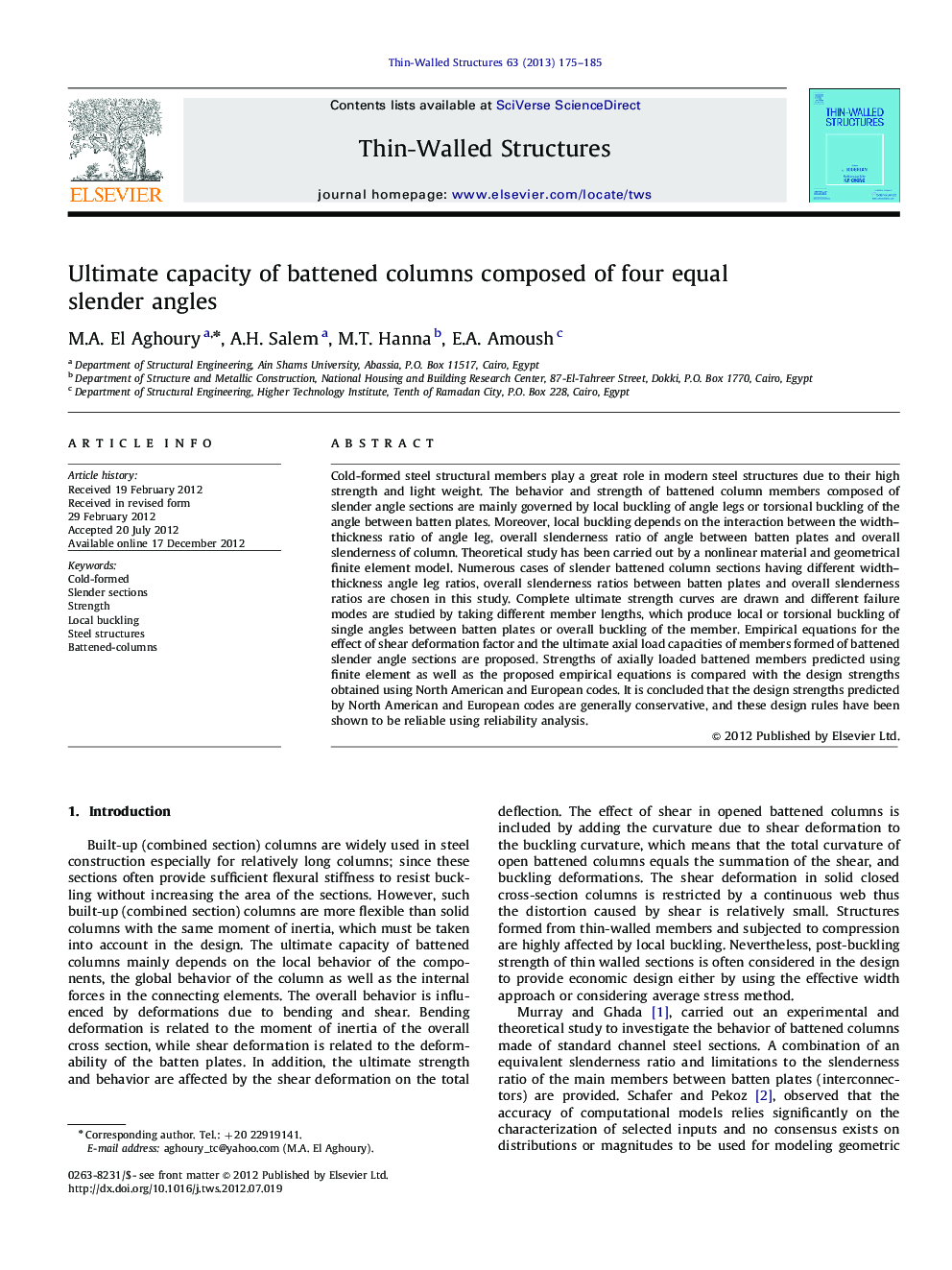| Article ID | Journal | Published Year | Pages | File Type |
|---|---|---|---|---|
| 309164 | Thin-Walled Structures | 2013 | 11 Pages |
Cold-formed steel structural members play a great role in modern steel structures due to their high strength and light weight. The behavior and strength of battened column members composed of slender angle sections are mainly governed by local buckling of angle legs or torsional buckling of the angle between batten plates. Moreover, local buckling depends on the interaction between the width–thickness ratio of angle leg, overall slenderness ratio of angle between batten plates and overall slenderness of column. Theoretical study has been carried out by a nonlinear material and geometrical finite element model. Numerous cases of slender battened column sections having different width–thickness angle leg ratios, overall slenderness ratios between batten plates and overall slenderness ratios are chosen in this study. Complete ultimate strength curves are drawn and different failure modes are studied by taking different member lengths, which produce local or torsional buckling of single angles between batten plates or overall buckling of the member. Empirical equations for the effect of shear deformation factor and the ultimate axial load capacities of members formed of battened slender angle sections are proposed. Strengths of axially loaded battened members predicted using finite element as well as the proposed empirical equations is compared with the design strengths obtained using North American and European codes. It is concluded that the design strengths predicted by North American and European codes are generally conservative, and these design rules have been shown to be reliable using reliability analysis.
► Strength of the columns is determined by a nonlinear finite element model. ► Strength is controlled by the local as well as overall slenderness ratios. ► AISI-2007 and Eurocode-3 are in good agreement with the finite element results. ► Empirical equations are suggested to predict the ultimate strength. ► The predicted design strength is reliable for the investigated columns.
